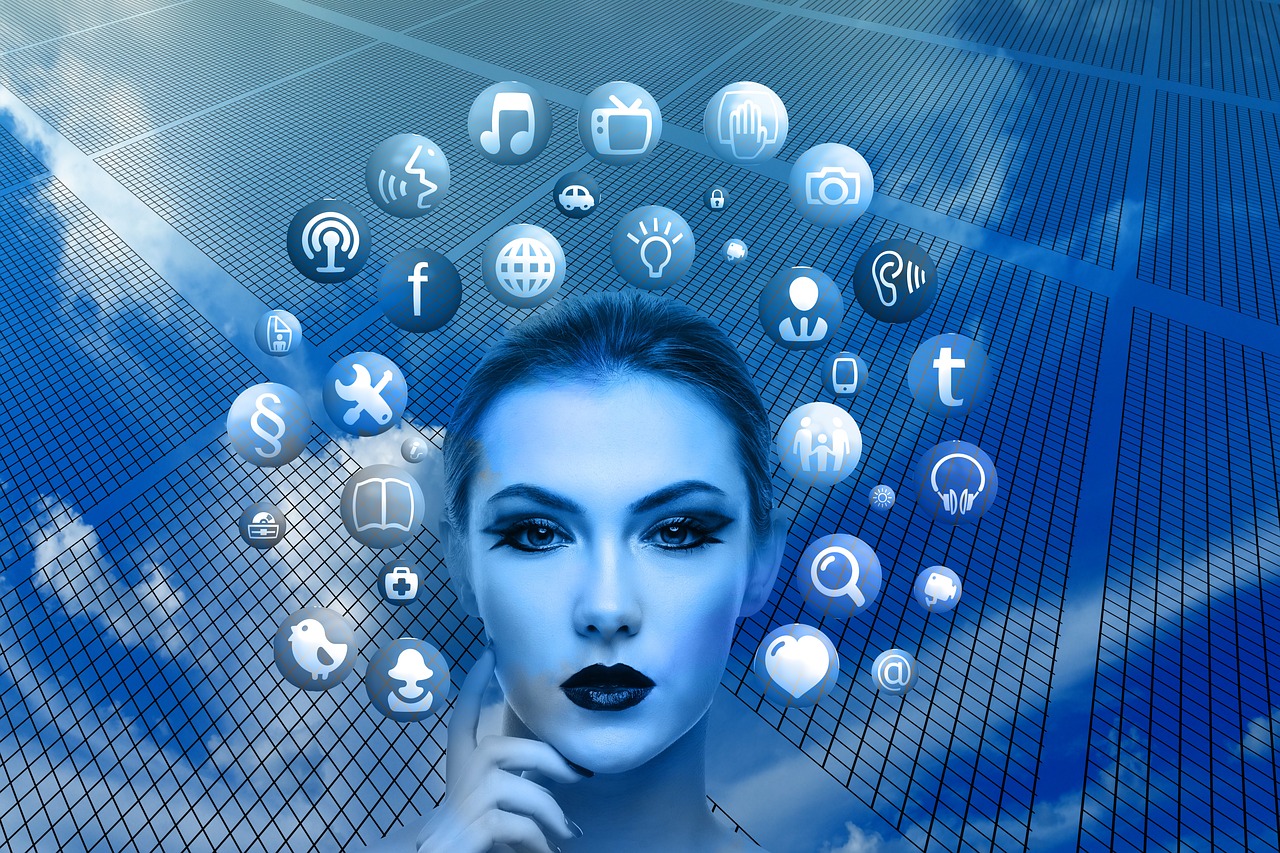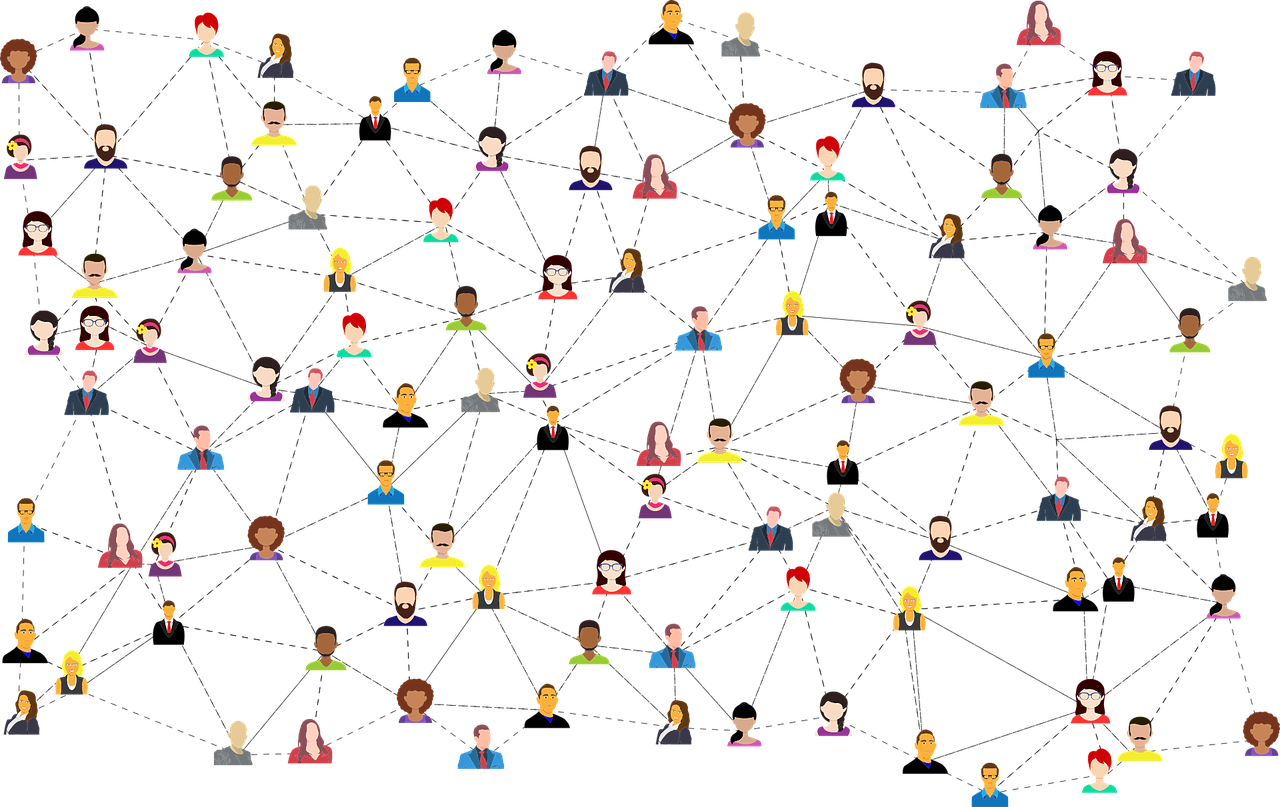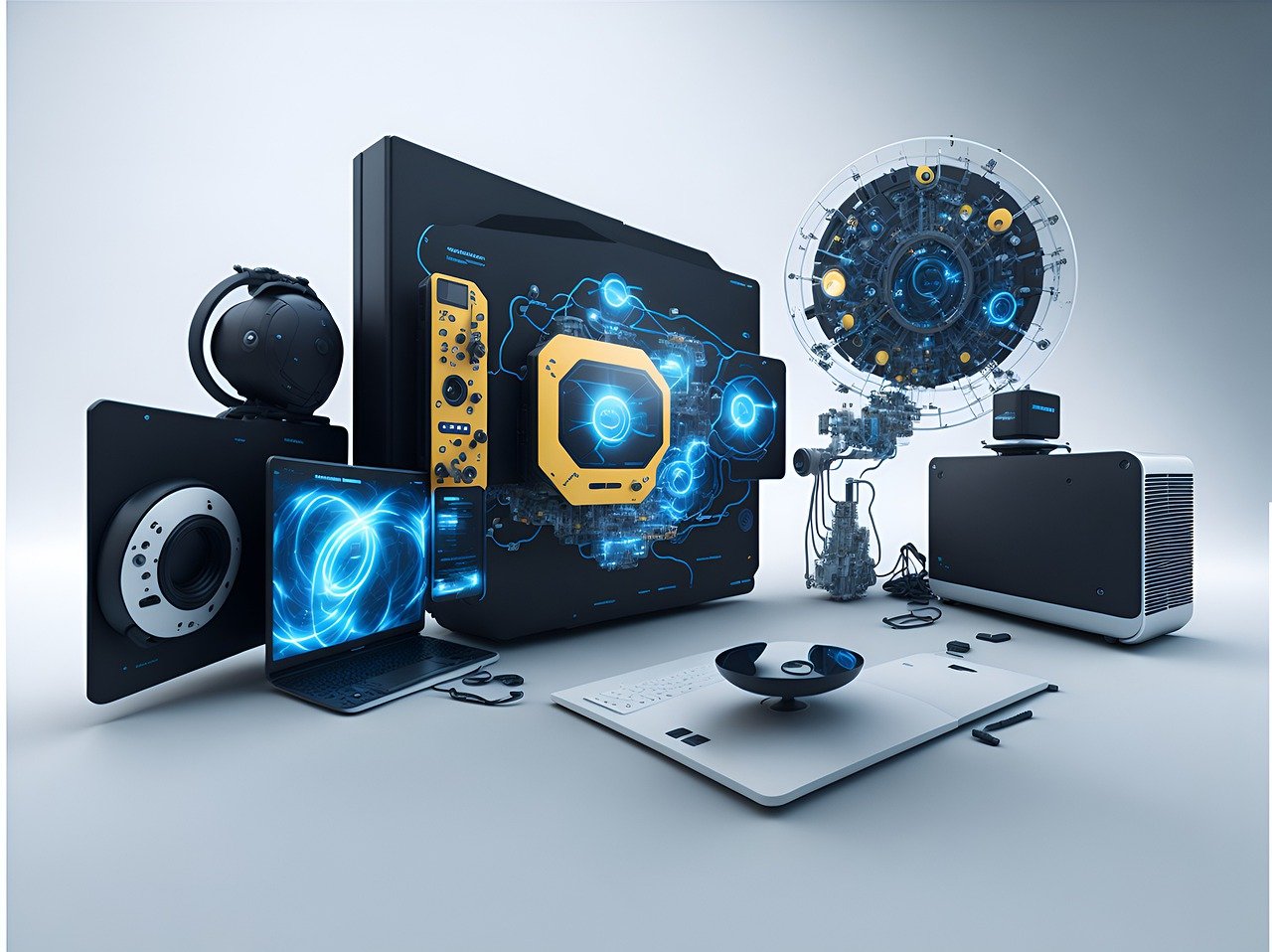What is the Internet of Things (IoT)?
The Internet of Things (IoT) refers to the vast network of interconnected devices that collect, transmit, and exchange data over the internet. This revolutionary concept extends internet connectivity beyond standard devices like computers and smartphones to a diverse range of physical objects and everyday items. By embedding these objects with technology, IoT enables them to communicate and interact with each other and with users, creating a more connected and intelligent world.
Components of IoT
The IoT ecosystem comprises several key components that work together to enable seamless communication and data exchange:
- Sensors and Actuators: These devices collect data from the environment or control physical systems.
- Connectivity: Various communication protocols (e.g., Wi-Fi, Bluetooth, cellular, LoRaWAN) that enable devices to connect and transmit data.
- Data Processing: Edge computing and cloud platforms that analyze and process the collected data.
- User Interface: Applications and dashboards that allow users to interact with and control IoT devices.
- Security: Measures to protect data and devices from unauthorized access and cyber threats.
Each of these components plays a crucial role in creating a functional IoT ecosystem, enabling devices to gather, transmit, and utilize data effectively.
How IoT Works
The IoT workflow typically follows a series of steps, from data collection to action:
| Step | Description |
|---|---|
| 1. Data Collection | IoT devices gather data from their environment using sensors |
| 2. Data Transmission | Collected data is sent to a gateway or directly to the cloud via various connectivity methods |
| 3. Data Processing | Cloud platforms or edge devices analyze the data using AI and machine learning algorithms |
| 4. Data Storage | Processed data is stored for future reference and analysis |
| 5. User Interface | Insights are presented to users through applications or dashboards |
| 6. Action | Based on the insights, automated actions are triggered or users make informed decisions |
This continuous cycle of data collection, analysis, and action forms the foundation of IoT applications across various industries.
Applications of IoT in Various Industries

The Internet of Things has found applications in numerous sectors, revolutionizing processes, enhancing efficiency, and creating new possibilities. From healthcare to manufacturing, IoT is transforming the way industries operate and deliver value to customers.
IoT in Healthcare
In the healthcare sector, IoT is playing a crucial role in improving patient care, streamlining operations, and enabling remote health monitoring. The integration of IoT devices in healthcare has led to the development of smart healthcare solutions that enhance treatment outcomes and patient experiences.
Key applications of IoT in healthcare include:
- Remote Patient Monitoring: Wearable devices that track vital signs and alert healthcare providers to any anomalies.
- Medication Adherence: Smart pill bottles that remind patients to take their medication and track usage.
- Asset Tracking: IoT-enabled systems for locating and managing medical equipment within hospitals.
- Telemedicine: Platforms that enable remote consultations and diagnoses using IoT-connected devices.
- Environmental Monitoring: Sensors that monitor hospital conditions to prevent the spread of infections.
These applications not only improve patient care but also help in reducing healthcare costs and increasing operational efficiency.
IoT in Smart Homes
The concept of smart homes has gained significant traction with the advent of IoT. Connected devices and systems are transforming traditional homes into intelligent living spaces that offer enhanced comfort, security, and energy efficiency.
| Device Category | Examples | Functionality |
|---|---|---|
| Lighting | Smart bulbs, switches | Remote control, scheduling, energy monitoring |
| Security | Smart cameras, doorbells | Real-time monitoring, motion detection, two-way communication |
| Climate Control | Smart thermostats | Automated temperature adjustment, energy optimization |
| Entertainment | Smart speakers, TVs | Voice control, personalized content recommendations |
| Appliances | Smart refrigerators, washing machines | Remote monitoring, automated ordering, energy management |
These smart home devices can be controlled through smartphone apps or voice assistants, offering convenience and customization to homeowners. The integration of these devices creates a seamless and responsive living environment that adapts to the users’ preferences and habits.
IoT in Manufacturing
The industrial application of IoT, often referred to as the Industrial Internet of Things (IIoT), is revolutionizing the manufacturing sector. By connecting machines, systems, and processes, IoT enables manufacturers to optimize operations, improve product quality, and reduce costs.
Benefits of IoT in manufacturing include:
- Predictive Maintenance: Sensors on machinery predict equipment failures before they occur, reducing downtime.
- Real-time Asset Tracking: IoT tags enable efficient tracking of inventory and assets throughout the supply chain.
- Process Optimization: Data from connected devices helps in identifying inefficiencies and optimizing production processes.
- Quality Control: IoT sensors monitor production parameters in real-time, ensuring consistent product quality.
- Energy Management: Smart systems optimize energy consumption in manufacturing facilities, reducing costs and environmental impact.
The implementation of IoT in manufacturing is driving the fourth industrial revolution, also known as Industry 4.0, leading to smarter, more efficient, and more responsive production systems.
Benefits and Challenges of IoT
While the Internet of Things offers numerous advantages, it also presents certain challenges that need to be addressed for its successful implementation and widespread adoption.
Benefits of IoT
The adoption of IoT technology brings several key benefits across various sectors:
- Improved Efficiency: Automation and real-time monitoring lead to optimized processes and resource utilization.
- Enhanced Data Collection: IoT devices provide access to vast amounts of real-time data for better decision-making.
- Cost Savings: Predictive maintenance and optimized operations result in reduced operational costs.
- Improved Customer Experience: Personalized services and products based on data-driven insights.
- Enhanced Safety and Security: Real-time monitoring and alerts improve safety in various environments.
| Aspect | Traditional Systems | IoT-Enabled Systems |
|---|---|---|
| Data Collection | Manual, periodic | Automated, real-time |
| Decision Making | Based on historical data | Based on real-time insights |
| Maintenance | Reactive | Predictive |
| Resource Management | Static allocation | Dynamic, needs-based allocation |
| Customer Interaction | Limited, generalized | Personalized, context-aware |
Challenges of IoT
Despite its benefits, IoT also faces several challenges that need to be addressed:
- Security Vulnerabilities: The large number of connected devices increases the attack surface for cybercriminals.
- Data Privacy Concerns: The collection and use of vast amounts of personal data raise privacy issues.
- Interoperability: Lack of standardization can lead to compatibility issues between different IoT systems.
- Scalability: Managing and processing data from millions of devices poses significant technical challenges.
- Power Consumption: Many IoT devices require constant power, which can be challenging in remote or mobile applications.
Addressing these challenges requires ongoing collaboration between technology providers, policymakers, and industry stakeholders to develop robust standards and best practices for IoT implementation.
For more information on IoT security challenges and best practices, you can refer to the NIST Cybersecurity for IoT Program.
Future Trends in IoT

The Internet of Things is continuously evolving, with new technologies and applications emerging rapidly. As IoT matures, several trends are shaping its future trajectory and potential impact across industries.
AI and IoT Integration
The convergence of Artificial Intelligence (AI) and IoT, often referred to as AIoT, is creating more intelligent and autonomous systems. This integration enables devices to not only collect and transmit data but also to analyze it and make decisions independently.
Examples of AI-powered IoT applications include:
- Smart Cities: AI algorithms optimizing traffic flow based on real-time IoT sensor data.
- Predictive Maintenance: Machine learning models predicting equipment failures using IoT sensor data.
- Personalized Healthcare: AI-driven analysis of data from wearable IoT devices for personalized health recommendations.
- Autonomous Vehicles: AI processing data from various IoT sensors to enable self-driving capabilities.
- Intelligent Retail: AI analyzing customer behavior data from IoT devices to optimize store layouts and inventory.
The combination of AI and IoT is expected to drive significant innovations across various sectors, enabling more sophisticated and responsive systems.
5G and IoT
The rollout of 5G networks is set to revolutionize IoT capabilities by providing faster, more reliable, and lower latency connectivity. This next-generation wireless technology will enable a new class of IoT applications that require real-time data processing and communication.
| Aspect | 4G | 5G | Impact on IoT |
|---|---|---|---|
| Speed | Up to 1 Gbps | Up to 20 Gbps | Faster data transmission for IoT devices |
| Latency | 20-30 ms | <1 ms | Near real-time communication for critical applications |
| Device Density | Up to 2,000 devices/km² | Up to 1 million devices/km² | Support for massive IoT deployments |
| Network Slicing | Limited | Advanced | Customized network performance for different IoT use cases |
The enhanced capabilities of 5G will enable new IoT applications in areas such as autonomous vehicles, remote surgery, and large-scale industrial automation, where high speed and low latency are critical.
Implementing IoT Solutions
Successfully implementing IoT solutions requires careful planning, strategic decision-making, and a comprehensive understanding of the technology landscape. Organizations looking to adopt IoT must consider various factors to ensure their implementation aligns with their business objectives and delivers tangible value.
Planning and Strategy
Effective planning is crucial for the success of any IoT project. A well-defined strategy helps in aligning IoT initiatives with business goals and ensures efficient resource allocation.
Key steps in the planning phase of IoT implementation include:
- Define Clear Objectives: Identify specific business problems or opportunities that IoT can address.
- Assess Current Infrastructure: Evaluate existing systems and determine necessary upgrades or integrations.
- Data Strategy: Plan for data collection, storage, analysis, and security.
- Choose Use Cases: Prioritize IoT applications based on potential impact and feasibility.
- Develop a Roadmap: Create a phased implementation plan with clear milestones and timelines.
- Evaluate Skills and Resources: Identify skill gaps and determine whether to build in-house capabilities or partner with external experts.
- Consider Scalability: Plan for future expansion and integration of additional IoT devices and systems.
A thorough planning process helps in mitigating risks and ensuring that IoT implementation delivers the expected benefits.
Choosing the Right IoT Platform
Selecting an appropriate IoT platform is a critical decision that impacts the success of IoT initiatives. The right platform should align with an organization’s specific needs, scalability requirements, and technical capabilities.
| Platform | Key Features | Best Suited For |
|---|---|---|
| AWS IoT | Scalable, secure, integrates with other AWS services | Large enterprises, complex deployments |
| Google Cloud IoT | AI/ML capabilities, robust data analytics | Organizations leveraging advanced analytics |
| Microsoft Azure IoT | Strong integration with Microsoft ecosystem | Businesses using Microsoft technologies |
| ThingWorx | Rapid application development, AR capabilities | Manufacturing and industrial applications |
| IBM Watson IoT | Advanced analytics, cognitive computing | Enterprises seeking AI-driven insights |
When choosing an IoT platform, consider factors such as:
- Scalability and flexibility
- Security features and compliance certifications
- Integration capabilities with existing systems
- Data analytics and visualization tools
- Device management features
- Pricing model and total cost of ownership
The right platform should provide the necessary tools and capabilities to support your IoT strategy while allowing for future growth and adaptation.
Conclusion
The Internet of Things represents a paradigm shift in how we interact with technology and the world around us. As we’ve explored in this article, IoT has far-reaching implications across various industries, from healthcare and manufacturing to smart homes and beyond.
Key aspects of IoT and its applications include:
- Interconnectivity: Enabling seamless communication between devices and systems.
- Data-Driven Insights: Leveraging vast amounts of data for improved decision-making and automation.
- Industry Transformation: Revolutionizing processes and creating new opportunities across sectors.
- Enhanced User Experiences: Providing personalized and responsive services in various domains.
- Technological Convergence: Integration with AI, 5G, and other emerging technologies for advanced capabilities.
As IoT continues to evolve, it promises to create more intelligent, efficient, and responsive systems that can address complex challenges and improve our quality of life. However, realizing the full potential of IoT requires addressing challenges related to security, privacy, and interoperability.
The future of IoT lies in its ability to seamlessly integrate with our daily lives and business operations, driving innovation and creating value in ways we are just beginning to imagine. As we move forward, the continued development and adoption of IoT technologies will play a crucial role in shaping our increasingly connected and intelligent world.
